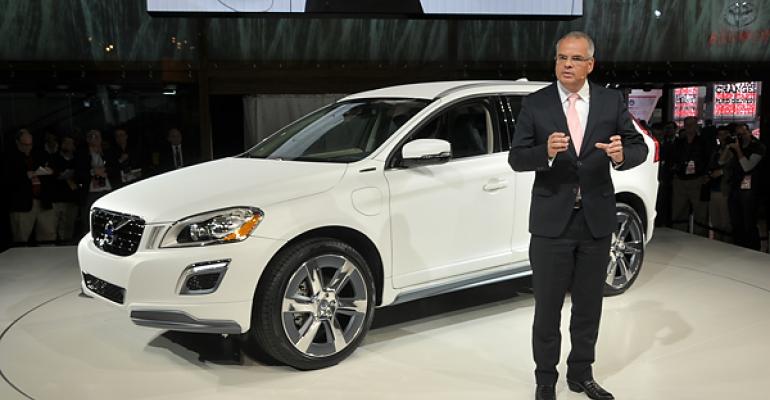CHICAGO – If an auto maker was to speak of migrating its entire portfolio to 4-cyl. engines, a casual observer might think of Hyundai, Mazda, Subaru or some other brand that lacks a fullsize pickup.
Instead, the first manufacturer making such a pledge is European luxury-marque Volvo, which proudly inked a deal not long ago to purchase V-8 engines from Yamaha in Japan for the XC90 cross/utility vehicle.
Giving the keynote speech kicking off the press days at the auto show here, Volvo Cars U.S. President John Maloney says the market no longer judges engines based on displacement or the number of cylinders, but instead on fuel efficiency and specific output.
“It just makes sense from an environmental standpoint, making engines that are much more fuel-efficient,” Maloney says.
“It makes sense from a logistical standpoint, allowing us to focus our expertise in areas that yield the greatest benefit. And it makes sense from a cost standpoint: Fewer engines and fewer parts mean leaner, smarter production.”
Maloney says Volvo will start introducing its newest 4-cyl. engines late next year in the U.S., and that it will take about five years before current 5- and 6-cyl. engines are phased out.
The strategy represents an about-face for Volvo. Only six years ago, before expensive fuel and government mandates forced sweeping powertrain changes, the Swedish auto maker was proud and excited to introduce the Yamaha-built 4.4L V-8 in the XC90 for the U.S. market.
At the time, the XC90 was a top player in WardsAuto’s Middle Luxury CUV segment, and V-8s made sense in this upper end of the market. But the V-8 was dropped in 2011 for cost reasons and due to limited availability.
Today, the XC90 lurks at the bottom of the pack, well behind the Cadillac SRX, Volvo’s own smaller XC60 and even the Porsche Cayenne, according to WardsAuto 2011 sales data.
After his speech, Maloney says he is confident Volvo’s next-generation 4-cyl. engines will be stout enough to motivate the XC90, the brand’s largest vehicle, and that customers will not be disappointed by the performance.
“We will do an XC90,” he says. “Clearly, we understand this segment demands a certain driving dynamic. We plan to deliver that.” The next-generation XC90 is due in late 2014.
Maloney points to the XC60 plug-in hybrid concept from this year’s Detroit auto show, which paired a 280-hp turbocharged 4-cyl. with a 52-kW (70-hp) electric motor for a package Volvo describes as both efficient and thrilling to drive.
A diesel-electric plug-in hybrid is bound for European showrooms this year, and a gasoline version will come later for the U.S.
Although modern 4-cyl. diesels can produce outrageous amounts of torque, Maloney says there are no plans for Volvo to offer one in the U.S.
“We do them for Europe and other markets,” he says. “Frankly, the benefits for diesel and the cost to homologate those engines for the U.S. doesn’t make a great equation.”
In the meantime, Maloney is convinced a luxury brand can sustain itself solely with 4-cyl. internal-combustion engines. “I think we can if we develop the right horsepower and torque profiles out of those engines.”
Volvo won its first Ward’s 10 Best Engines award in 2011 for the 300-hp 3.0L turbocharged inline 6-cyl. engine in the S60 sedan.
Also in his speech, Maloney says Volvo is developing an animal-detection system to prevent collisions with large creatures such as deer and small ones such as dogs.
The system uses radar and cameras to identify images in the path of the oncoming vehicle. If the driver takes no evasive action, the system will intervene and slow the car or completely stop it depending on the proximity of the animal.
An on-sale date and price for the feature have yet to be determined.





